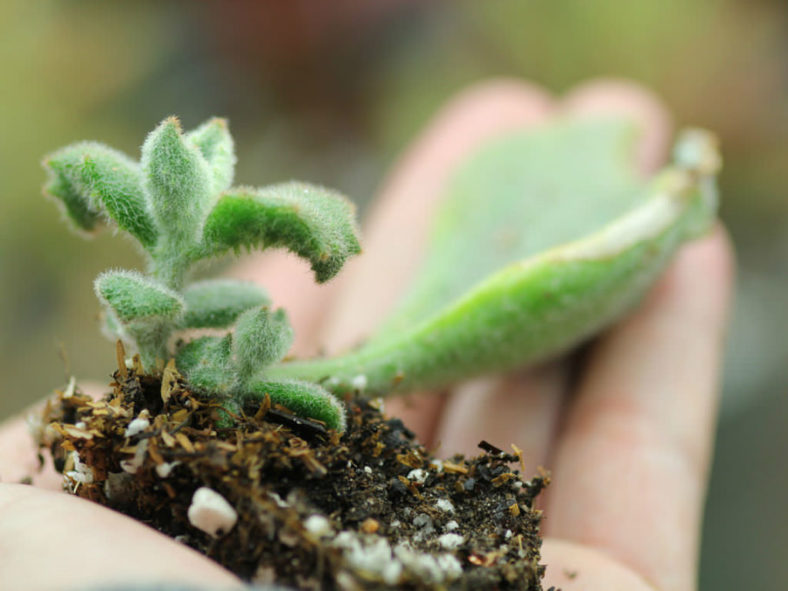Kalanchoes are thick-leaved succulents often seen in florist shops or garden centers. Most end up as potted plants, but areas that can mimic their native land of Madagascar can grow them outdoors. They sense the shorter days of winter and provide your garden with clustered red, yellow, orange, pink, purple, white, and variants of these blooms in winter and spring.
Growing Kalanchoes from cuttings is an effective way to propagate the plants. Select a healthy, non-flowering stem with at least two leaves for best results.
Cutting Selection
The best time to take cuttings from your Kalanchoe is late spring or early summer. Select a 2-inch (5 cm) long stem with at least two leaves attached. It is good practice to avoid any flowering stems so that the cutting concentrates on growth rather than reproduction. After removing the stem, you need to place this cutting in a dry area. The cut end needs to callus before you attempt to plant it in a growing medium.

Plantlet Alternative
Instead of removing a stem cutting from Kalanchoes, you have the option of cutting a plantlet from one of the leaves. These succulents are known for their plantlets, which grow directly off the mother plant's leaf edges. The plantlets are miniature leaf shapes that grow side by side along the leaf margin, resembling a decorative border. Allowing these plantlets to remain on the leaf causes Kalanchoe to appear misshapen and steals precious energy away from flowering activity. Cut a plantlet off the leaf at its connection point and allow it to callus before planting it in a pot. The removal process does not harm the mother leaf because the plantlet grows on a small base. With proper care, a new Kalanchoe plant flourishes from the callused plantlet alone.
Growing Environment
Preferring warm climates, Kalanchoe cutting cultivation must have desert-type soil for the best propagation results. A simple starter soil consists of perlite and peat moss in an equal ratio. This mainly sandy soil structure, along with nutrient-rich peat, allows the cutting to have a lot of air pockets and well-drained moisture for optimum growth. For one cutting, a 4-inch (10 cm) pot is sufficient to support the growing Kalanchoe in the spring or summer. You may plant the cutting outdoors or pot it in a separate container approximately 2 to 3 weeks after starting the cutting in starter soil.
Watering Considerations
Kalanchoe cuttings prefer dry soil conditions between irrigation sessions so that rot does not set in. A simple misting from a water bottle is sufficient for brand-new cuttings. Once your Kalanchoe has developed a strong root system, it withstands drought well and requires less water than a mature plant.
Source: sfgate.com
Links
- Back to genus Kalanchoe
- Succupedia: Browse succulents by Scientific Name, Common Name, Genus, Family, USDA Hardiness Zone, Origin, or cacti by Genus